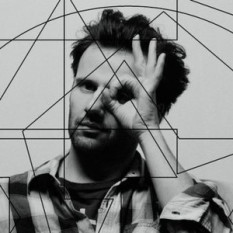Microhouse has its roots in the minimal techno, bitpop (both developed in the early 1990s), and house (developed in the early 1980s) genres of music. Its first echoes appeared in a glitch album by German experimental artist Oval, in 1993. Like many contemporary electronic genres, Microhouse has many influences, most notably techno and the "click and pop" garage house that has emerged from Yorkshire Bleeps and Bass (or "Bleep"), bitpop and minimal techno. Contrasting with tech house, which is often thought of as 'house music with elements of techno in its arrangement and instrumentation', microhouse is more aptly described as 'housey minimal techno' – a marriage of the funky and groovy backroom house elements with bitpop and the driving, repetitive sound of techno. Emphasis tended to fall on cushiony kick-drum thumps and the accompanying hi-hats, with faint textures provided by synthetic strings and dreamy keyboard tones.
Throughout the late ‘90s and early 2000s, several small labels thriving on this approach cropped up. A fair percentage of the output from already-established labels like Playhouse [de] (Isolée, Losoul [de]), Kompakt (Sascha Funke, M. Mayer) and Klang Elektronik [de] (Farben) made for some of microhouse’s most thrilling moments. Other labels -- such as Force Tracks (Luomo, MRI), Perlon (Ricardo Villalobos, Pantytec) and Trapez (Akufen, M.I.A.) –- were virtually all-microhouse in scope.
Coinage
Edit
The term microhouse was coined by music journalist and DJ Philip Sherburne, writing for the magazine The Wire in July 2001,[6] to describe, according to Stelfox, "the spectral, hypnotic interpretation of classic Chicago grooves emerging on labels such as Perlon, Kompakt, Playhouse, Ongaku, Klang Elektronik and the Mille Plateaux family of imprints-most notably Force Tracks and Force Inc- at the turn of the millennium."
Sherburne recalled how listening to Perlon's Superlongevity compilation in 1999, he "had the strong impression that House had been stripped down to a trifold essence: rhythm, soul and silence." For Sherburne, this was "not so much House as 'MicroHouse'," capturing "not only the proportions of the music, but also its semi-underground status, positioned at odds with more traditional Deep House, to say nothing of the genre's even more mainstream, megaclub fare." He traced the sound's reductionism to "Chain Reaction's blissed out minimalism," and its "punchier and groovier" qualities to "Matthew Herbert's clipped, cushioned romps, and the minimalist Chicago disco pioneered by the likes of Moodymann and Theo Parrish." He traced further antecedents in "the catalogues of German labels like Klang Elektronik, Playhouse and subsequently Force Tracks". .


